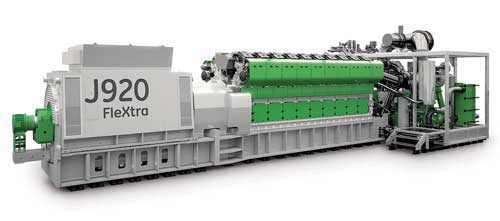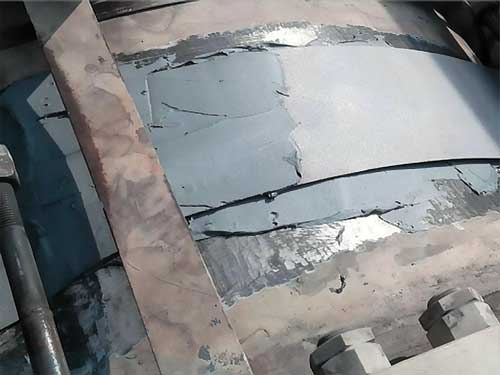New in gas processing technology
B. Andrew, Technical Editor
Barcode scanner for pipeline mapping
 |
CartoPac International Inc., in partnership with Code Corp., has introduced a fully integrated barcode scanning solution for gas utility companies.
Many gas utilities rely on the CartoPac Suite to manage as-built distribution network information collected during pipe installation to ensure that their asset databases are “traceable, verifiable and complete” in accordance with existing US Department of Transportation (DOT) Distribution Integrity Management Program (DIMP) regulations. However, pending rules will require utilities to collect additional tracking data by scanning barcodes on every plastic pipe and fitting placed in the ground as part of their natural gas distribution networks.
Manufacturers of PVC gas pipes have already begun applying barcodes containing 18 standardized attributes describing how, when and where each pipe section was created. Printed on the yellow surface of PVC gas piping, the barcodes lack the contrast that is needed for reading by most handheld scanners, especially in dark and dirty construction trenches. As a result, field personnel mapping the as-built assets often stop and manually key in the barcode, slowing data collection and potentially introducing errors. To solve the problem, Code’s CR2600 was integrated into the CartoPac Software Suite. Code’s CR2600, a barcode reader with an IP65 rating, is small, lightweight and can be easily carried by gas utility mapping personnel.
CartoPac developed an interface application for the Code barcode reader to stream captured codex information into the CartoPac Software Suite running on Windows and Windows Mobile GPS-enabled data-collection devices, including the Trimble Geo series. Code’s barcode reader transmits barcoded data via Bluetooth connection to the CartoPac software, where the 18 data points describing the PVC pipe are stored seamlessly as attributes, along with other field data collected for inclusion in the enterprise GIS.
In the case of a recall of defective PVC pipe manufactured by a supplier during a certain time period or at a specific plant, the gas utility will be able to query its GIS database and generate a map pinpointing the locations of every buried asset that may need replacing.
Increased power output of FleXtra gas engine
 |
As Germany moves to greater energy efficiency through its Energy Transition plan, it looks to increase the use of natural gas to enable renewable energy and reduce emissions. Helping promote energy security in Europe, GE’s Distributed Power has piloted with customer Stadtwerke Rosenheim to develop a modification and upgrade for its Jenbacher J920 FleXtra gas engine that raises power output of the engine by nearly 10%—an increase from 9.5 megawatts (MW) to 10.38 MW for the 50-Hz unit.
The power boost of more than 0.8 MW of electrical output has expanded the number of European homes that can be served with power from 18,500 homes to more than 20,000. The modified and upgraded pilot engine already contributed reliably to the power and heat supply of the city of Rosenheim during winter 2016/2017. The gas engine is Ecomagination-qualified, and with the highly efficient 10-MW gas engine platform, a European facility could reduce carbon dioxide (CO2) emissions by as much as 78,000 metric t for a 100-MW power plant over the course of 1 yr, which is equivalent to the CO2 emissions from more than 41,000 cars on European roads.
The natural gas-fired Jenbacher J920 FleXtra combined-heat-and-power system provides electricity and thermal power (hot water) for local residents and industrial customers with a lower carbon footprint compared to conventional power plants, supporting Germany’s effort to reduce greenhouse gas emissions by 40% by 2020. Also, the Jenbacher J920 FleXtra gas engine’s short startup time increases operational flexibility to overcome the challenges of intermittency associated with adding more wind, solar and other renewable energy supplies.
Composite repairs solve explosive situation
 |
A major challenge faced by asset owners and operators is to maintain pipework integrity. As conduits for processed fluids, pipes are susceptible to corrosion, erosion and mechanical damage. Common failures can be due to either internal or external corrosion of the pipe wall. They can result in metal loss, cracking or even leakage. A small crack may be difficult to identify, but it can damage the pipe enough to cause a catastrophic failure.
In October 2015, a steel producer in the Czech Republic discovered that a gas supply line to a blast furnace was suffering from cracks. Gas was leaking into the atmosphere through one of the cracks. The intake pipe had a diameter of 2 m and had suffered a crack 2.5 m long and 2 mm wide. The repair needed to be performed live, since a conventional solution to this problem would have incurred serious challenges—hot work permits, rescheduling of products, and other environmental and safety concerns, due to the proximity of process equipment and other product pipelines. The use of a composite repair was determined to be a safer alternative, as it eliminated the need for hot work and shutdown of the pipeline, and it minimized environmental exposure. In addition, the repairs could be installed within the tight clearances available.
The chosen solution was an epoxy composite material produced by UK-based Belzona. These materials can be used to protect equipment from the effects of erosion and corrosion. Cold-applied bonding techniques can be used to repair damaged pipework, with composite materials working as bonding agents. To provide an initial seal to the crack, a fast-curing product was used, stopping the leak in-situ and eliminating the risk of explosion.
The surface could then be prepared, and the substrate was blasted to achieve the optimum profile. Belzona 1111 was then applied in two layers, incorporating Belzona 9341 reinforcement sheet. The solution bypassed the issues of a dangerous gas leak and allowed an in-situ repair without the need for downtime, making it an effective long-term solution to the customer’s problem.




Comments